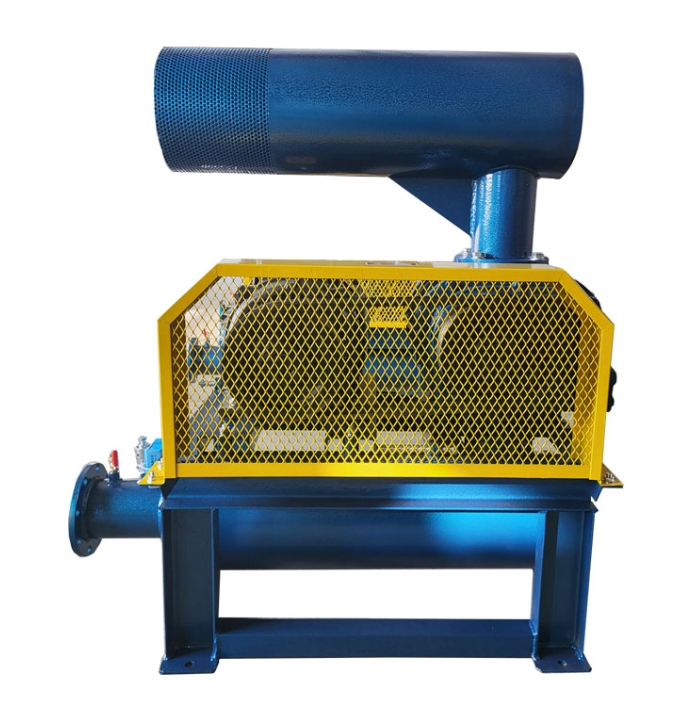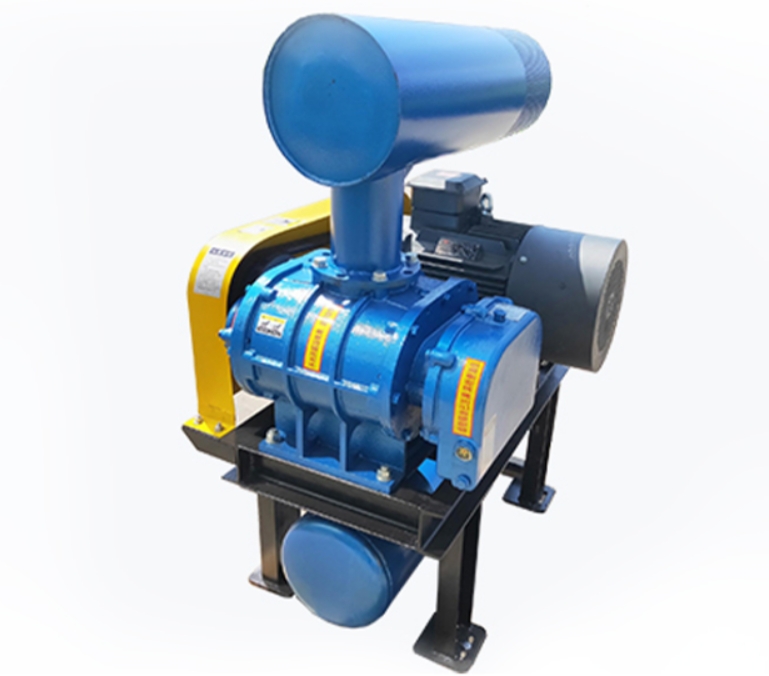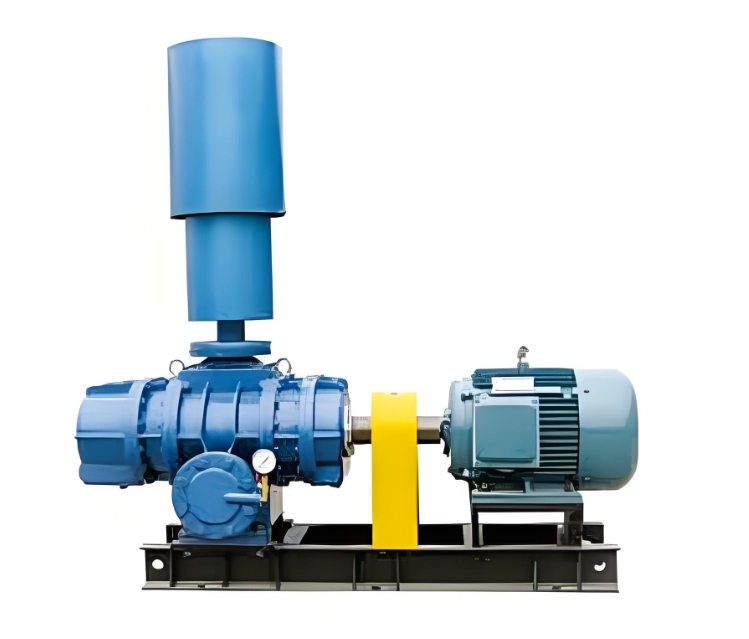Introduction to the working principle and structure of material conveying Roots blower

Material conveying Roots blower is a common conveying equipment. The following is a detailed introduction to it:
1、 Working principle
Roots blower belongs to positive displacement blower, and its working principle is mainly achieved by two or more continuously rotating impellers (usually three bladed impellers) meshing with each other and rotating relative to each other in the space sealed by the casing and wall panel. This movement causes gas to be drawn in from the suction port, expand in the suction chamber, and then compressed and blown out, producing a continuous airflow. This airflow can push materials forward in the pipeline, achieving material transportation.
2、 Structural composition
The Roots blower is mainly composed of five parts: casing, wall panel, impeller, oil tank, and muffler. Among them, the casing plays a supporting and fixing role; The wall panel connects the casing and impeller, supporting the rotation of the impeller and providing end face sealing effect; The impeller is the rotating part of a Roots blower, designed to form a sealed chamber during operation, effectively compressing and transporting gas; The oil tank is used to store lubricating oil to lubricate gears and bearings; Silencers are used to reduce the noise generated by airflow pulsation during the inlet and outlet of Roots blowers.
3、 Characteristics and advantages
1. Simple structure and low noise: The Roots blower adopts a three bladed impeller design, which reduces noise during operation and has a simple structure that is easy to maintain and upkeep.
2. High conveying efficiency: Roots blower can maintain high conveying efficiency when conveying materials, suitable for occasions with high requirements for conveying efficiency.
3. Oil free lubrication: The working principle of Roots blower eliminates the need for lubricating oil inside, avoiding adverse effects on materials caused by lubricating oil leakage or contamination.
4. Wide applicability: Roots blowers can be widely used in various industries such as grain processing, feed processing, chemical industry, building materials, metallurgy, environmental protection, etc., to meet different material conveying needs.
5. Strong customizability: Roots blowers can be customized according to actual needs, suitable for different specifications of conveying pipelines and material characteristics.
4、 Application Fields
1. Grain processing: Roots blowers can be used for conveying, storing, and ventilating grains such as wheat and corn.
2. In the chemical industry, Roots blowers can be used for the transportation and processing of chemical raw materials.
3. Environmental protection industry: In the environmental protection industry, Roots blowers can be used for aeration, stirring, and other processes in sewage treatment systems, as well as mine ventilation systems.
4. Building materials industry: In the building materials industry, Roots blowers can be used for conveying and processing materials such as cement.
5、 Maintenance and upkeep
To ensure the normal operation and extend the service life of Roots blowers, regular maintenance and upkeep are necessary. This includes checking the fastening, lubrication, belt tension, and pulley misalignment of various parts, as well as regularly replacing lubricating oil and cleaning the oil tank. At the same time, attention should be paid to avoiding installing fans in places where people frequently enter or where flammable, explosive, and corrosive gases are easily generated to ensure their use.
In summary, the material conveying Roots blower has the characteristics and advantages of simple structure, low noise, high conveying efficiency, oil-free lubrication, wide applicability, and strong customizability, and has been widely used in multiple industries. To ensure its normal operation and extend its service life, regular maintenance and upkeep are required.





